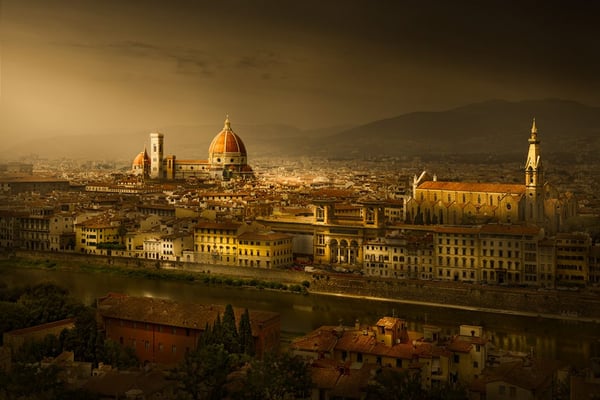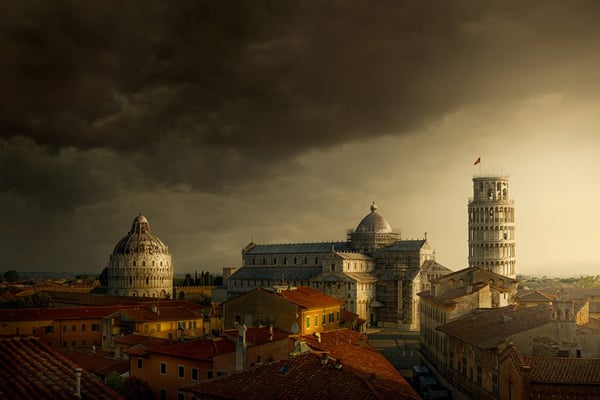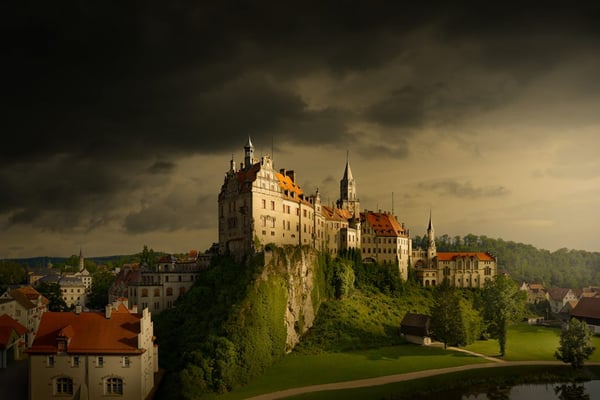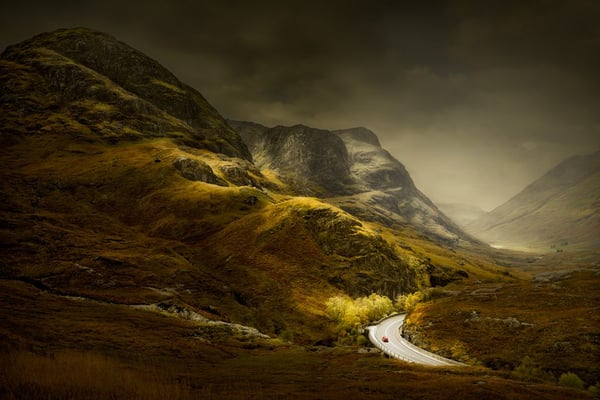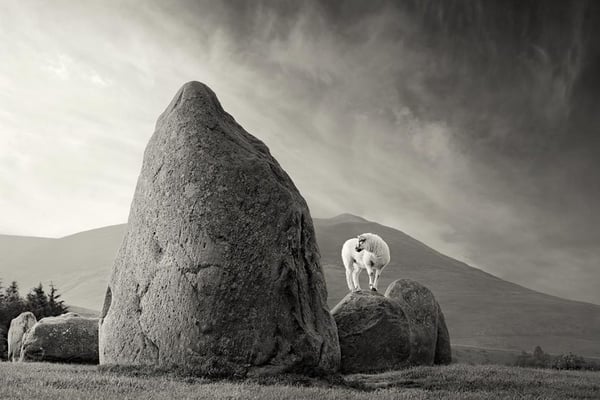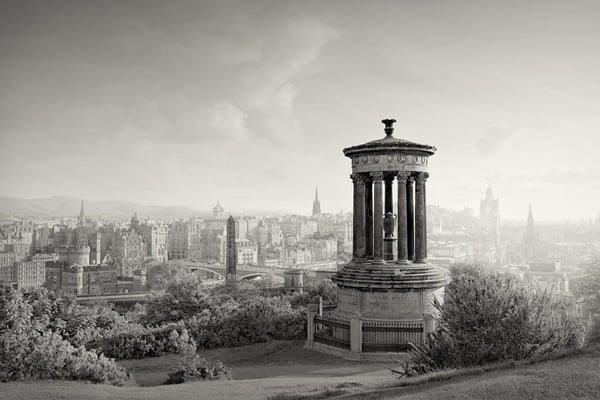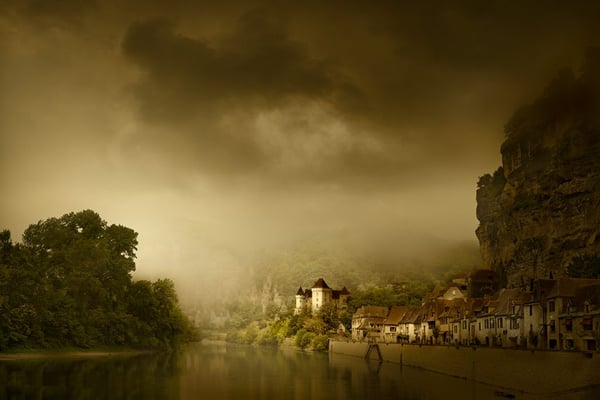Creating Photographs with David Osborn
Tripods: Don’t Take Photographs, Create Photographs
David Osborn
Tripods focus the mind to “create” not “take.” We all understand using tripods as a means of support, but this alone greatly undervalues the tripod in landscape photography. The use of a tripod has far greater benefits that will change your whole mental approach to how you work, and the aesthetic quality of the photographs you then produce. It will change you from a photographer who “takes” photographs to a photographer who “creates” photographs. A photographer that creates, thinks. A photographer that thinks, produces quality.
Just a word game?
No, it’s a fundamental mind-set difference at the very core of professional quality photography:
“Taking” a photograph, we see something we like, stop momentarily, take it and move on. Investing little time, thought or personality into the image. The result is a literal recording, an unemotional product shot with no story.
“Creating” a photograph is intentional, contemplative and methodical. The final photograph transforms from being generic to being unique, because we have added our personal vision. An idea, a point of view, an opinion, a feeling, an emotion. A story combined with aesthetic values.
Creative photographs are personalized statements using the scene as inspiration to communicate something more than the literal. The difference between the two approaches is all in the mind not the camera; your approach to photography and how to craft pictures.
Is it important?
The answer depends on why you do photography. As an enthusiast enjoying the outdoors with friends, travelling, recording memories, having fun. No. As a serious professional photographer or the enthusiast wishing to progress in photography. Yes, it is absolutely critical, essential.
Why? Because what you are selling in your photographs is the ability to visually communicate. Either your personal vision as an artist or the company’s vision employing you as a commercial photographer.
Technical quality is a prerequisite but not the critical quality. If we buy a book, it is not for the physical book nor the technical quality of the physical book; but the story contained within the words. The physical book is just a means to transport the story. Photography is no different. It is the personal vision contained within the photograph and its artistic rendition that you are selling. Books sell verbal communication, photographs sell visual communication. Both need good authors to create quality.
So. What about tripods?
The first step in creating a photograph is having “clarity of vision” before touching the camera. Vision is thinking and listening to your instincts, deciding what you want to say about the landscape and how the final photograph will look. Creativity is how you solve those problems. Clarity of vision comes from slowing down and contemplating; you can’t do that running around. Tripods stop you running around.
There are two approaches to photography. Shoot every angle and composition possible, edit the pictures later and pick the best. Or, stand, look at the scene and through a process of elimination realize there is only one “best” place to stand; then take the photograph from there.
The second approach produces quality. Why? Because every question you ask during editing at home in the first approach, you ask those same questions before touching the camera in the second approach.
Reverse the process from “act first, think later” to “think first and act later.” Tripods stop you from running around and allow your mind to slow down and become more contemplative. Contemplation creates that essential clarity of vision, through looking with more care and attention to detail, while asking critical questions. Stand, think and ask yourself: What do I want to say in this photograph? What do I want to communicate? Only, when you know the answer to that, start taking photographs. We all look, tripods put you in the mind-set to see.
Well, you end up with the same.
No. “Think first, act later,” is not about saving camera batteries!
Imagine you are shooting a castle in a mountain landscape. You can shoot a hundred images of the castle from every direction, focal length and lighting condition. You still won’t have perfectly captured one frame containing everything you need. The number of possible variations is totally limitless; the odds are stacked against you. Don’t rely on luck, increase the odds through intelligence. Looking and thinking first makes you realize what you need for the perfect photograph, so you can move, wait and capture it while you still have the opportunity to do so. Home is too late, perfection is in the detail; it slipped through your fingers!
Imagine we wake up and decide today we want to write a book. Do we just start typing thousands of random words for four hours, then go back and see if we created a story? Of course not, we must have an idea first to know what words to type. But, this is what we tend to do with photography, because pushing that button is just so easy and fast and we always get a result; but it will not do you any favors in the pursuit of quality photography. Volume does not make quality, thinking makes quality. Tripods allow you to think, then refine, then invest your efforts in one good photograph.
As an aid to improving your photography, set yourself this imaginary brief for every landscape you shoot: ”I am shooting a gallery exhibition. I am only allowed to exhibit one photograph per location, I am only allowed to shoot one photograph per location.”
Then take your camera and tripod and stand where you think makes that best picture. Do not take any photographs but now find reasons why, where you are standing is NOT the best composition for the story you want to tell. Think about the story. Think about moving your tripod and camera left, right, up, down, nearer or further away. Try them. Keep refining where you are standing and the focal length of your lens, until you run out of any better options that give you a better composition relative to your story. By a process of elimination, you must therefore, now be in the best position. For every picture, there is ONLY one place to stand. The trick is finding it. If the composition you see through the camera wouldn’t make it to the gallery wall, why shoot it in the first place. Invest your time in quality, not quantity. Don’t waste an hour of your time editing images at home, invest that hour wisely at the start before shooting.
Tripods and Photoshop!
Tripods are written about in the context of keeping the camera still for long exposures and low light. A little is written about slowing you down as covered here. What I almost never see written regarding tripods, is the ability to shoot multiple frames that all align perfectly in Photoshop, except in the HDR context. On a technique level, this is my most valuable use for a tripod that opens a whole new world of creativity in photography when combined with Photoshop. Photography with the sole purpose of creating digital files for Photoshop.
Photoshop concept
Using the example of a castle in a mountain landscape. The camera on a tripod allows me to shoot first a good general overall image with beautiful light on the castle. Five minutes later, a beam of light strikes the mountains in a beautiful way, I shoot it. Having used a tripod, the images align perfectly in Photoshop. I can now paint in the light falling on the mountains into my first image with light on the castle. Now, I have an image with light on the castle and the mountains, something that never happened in real life when I was there. I can keep doing this for any content in the image. I can wait for the sky to be the mood I want, or even drop in a new one later. Now, I am creating the landscape photograph because I am imposing my vision on the image. Waiting for what I want, then capturing what I want – so that I create – what I want. Visualizing the final photograph first, then setting out to create that visualized photograph physically. Not accepting what I was given in a single image and using Photoshop as a correction tool, but Photoshop as THE central creative tool.
Photoshop is cheating!
Yes, I am cheating. Did the camera capture what really happened in a single frame? No. Therefore, the photograph could be condemned as cheating because of the use of Photoshop. This is a very old fashioned stand point, we have evolved. Photoshop is cheating if you set out to deceive the viewer by disguising the use of Photoshop, for example altering documentary photography.
Photoshop should be embraced for its creative potential and control, love it or hate it, it’s here to stay. It is the future, and to deny it is no less than turning your back on the digital camera and digital process itself. Digital photography and Photoshop are now opposite sides of the same coin, both essential for the final photograph.
Photography got its label as an “honest” medium because the ability to alter photographs was limited. Photographs were “assumed” to be honest, which then evolved into an unstated rule that was never official. The reality is, photographers have always tried to manipulate their images in the darkroom.
Oxford dictionary, “Art” – “The expression or application of human creative skill and imagination, typically in a visual form such as painting or sculpture, producing works to be appreciated primarily for their beauty or emotional power”. The history of world art has never been motivated by honesty defined as “recording reality”. Photoshop is just a modern digital version of the painter’s canvas, brushes and paint with the same motivations to create artistic images with aesthetic values.
Photoshop allows me to create images with a certain look, that if restricted to the confines of the ‘no Photoshop, no cheating’ rule, simply would not be possible to make. For me, photography with the use of a tripod has now evolved, to being no more than the mechanical means to gather the digital files required for Photoshop. The final landscape photograph being a product of Photoshop, no longer the camera. The images are my creative interpretations of the landscape that combines modern photographic technology with the doctrines of a painter. Photoshop is where I create.
Photoshop is a serious asset to your skills and for your survival. For the ambitious enthusiast or working photographer looking ahead, Photoshop is now an essential skill you ignore at your cost, like denying one side of a coin, impossible. Why? Massive and ever growing, economical competition. Simply, the realities of life. Film required greater technical ability and knowledge to get a quality image, along with time and equipment to make a print. This naturally limited the volume of quality images in the market and the number of people supplying them.
Digital cameras make photography accessible to everyone; old news. However, the technical quality of digital images is incredible now, and it is quality achieved for little technical knowledge. The volume of high quality images on a technical level is rising every day. Proportionally though, creative and artistic standards as works of visual communication have fallen just as fast.
Digital cameras make it so easy to get good technical images, that for many, it has replaced thinking and creativity. The rules that make good visual communication have never changed, only the technology. Digital images straight from the camera all have a similar look: polished, clinical and cold. Vision and creativity define a good photograph, not technical quality alone.
Creativity and personal vision will make a photographer stand out, and the one who stands out, goes forward. The only position in the digital workflow to inject personal creativity and vision is in post-production, the Photoshop stage. Creativity and personal vision is what will set you apart, because the world still wants and looks for photographs that are new, personal artistic statements that create an emotional response in the viewer. That has never and will never change. Learning Photoshop and a good grounding in the rules of good visual communication give you the tools to be unique and the ability to fight the future, survive. To invest in the newest camera but not in knowledge is a false investment because quality photography today requires good camera technology and Photoshop knowledge.
Create Photographs
My approach is neither right nor wrong, it is just my personal way of adopting Photoshop that allows me to create landscape images the way I want them to look aesthetically. The important lesson is to create photographs, not take photographs; if you want to make good quality, professional landscape photography that gets noticed. How you go about it starts with understanding the mental approach to picture making and a good tripod goes a very long way to putting you in that correct frame of mind. On a technique level, a good tripod allows me a personal way of working in Photoshop. The bottom line, is no matter the technical quality or approach taken, if your image looks the same as everyone else, has no aesthetic values or personal statement to make, it has nothing to say; like a book without a story. If it has nothing to say, why should anyone else say anything about it? You are not even in the game.
David Osborn began his professional photography career as a hard news photographer with Reuters News Agency and AP in London then overseas in the 1980’s. This was followed by years of corporate annual report work, including being the photographer responsible for the £4 billion, Heathrow Airport Terminal 5 construction project in London.
Over the years David made a transition from corporate to landscape photography, now running photography and Photoshop training workshops and courses worldwide, where he passes on his years of professional working knowledge and experience to those with a desire to learn and improve their skills. David’s website, https://www.davidosbornphotography.com/landscape-photography-workshops/, contains many images, tutorials and workshop information covering his whole philosophy and modern approach to landscape photography.

